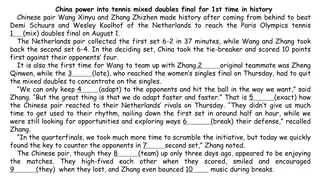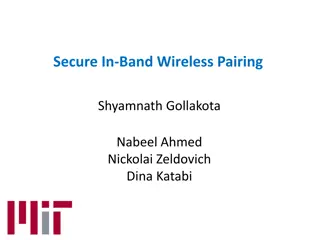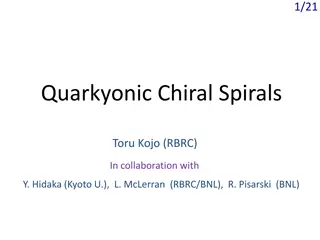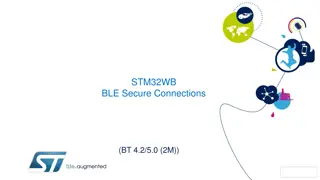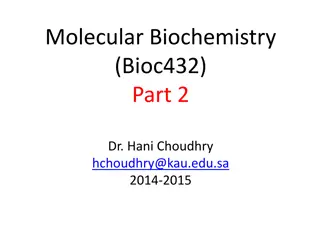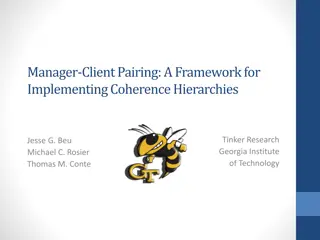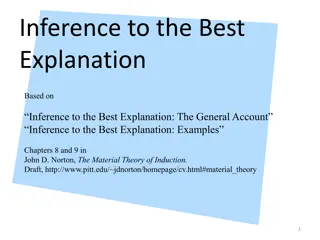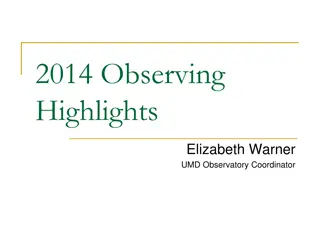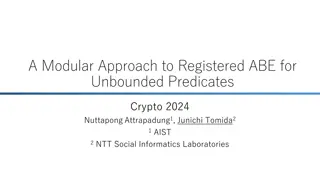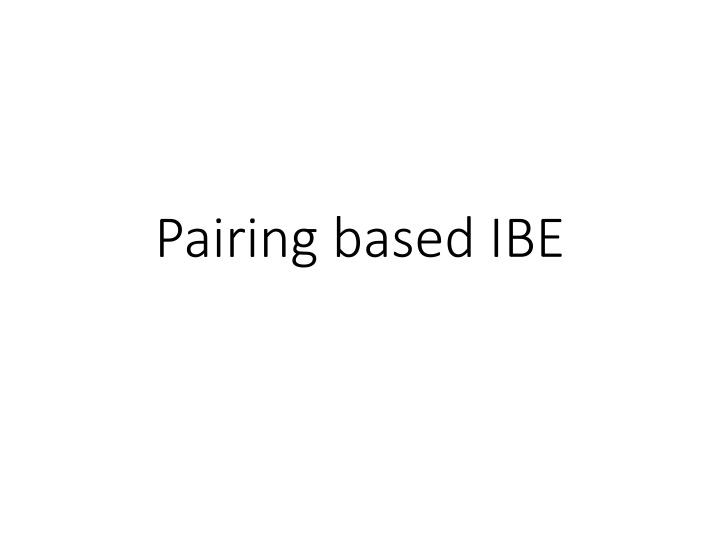
Pairing-Based Identity-Based Encryption (IBE)
Explore the concepts of Pairing-Based IBE, including definitions related to finite fields, algebraic closures, embeddings, equivalence relations, Tate pairing, and unique output generation for cryptographic operations.
Download Presentation

Please find below an Image/Link to download the presentation.
The content on the website is provided AS IS for your information and personal use only. It may not be sold, licensed, or shared on other websites without obtaining consent from the author. If you encounter any issues during the download, it is possible that the publisher has removed the file from their server.
You are allowed to download the files provided on this website for personal or commercial use, subject to the condition that they are used lawfully. All files are the property of their respective owners.
The content on the website is provided AS IS for your information and personal use only. It may not be sold, licensed, or shared on other websites without obtaining consent from the author.
E N D
Presentation Transcript
Some Definitions K: Is a finite field Fq. Algebraic Closure: ? E[m]={P E( ?): mP=O}=Ker([m]) Set of all those points which are m-torsion, but are not necessarily defined in K. Consider an extension of Fq, say ???, which contains the co-ordinates of all such points. The minimum such k is called the embedding degree. L: Let L be the embedding field with the co-ordinates of all points in the m-torsion.
Some more definitions ? =multiplicative group ? /(? )m: Defines an equivalence relation ~, st. a.??~ ?, ?,? ? . E(K)/mE(K): Defines an equivalence relation: ?~? + ??, ?,? ?(?)
Tate Pairing Consider P E[m]. Consider a divisor ??~ ? ? Since P E[m], mP=O. Thus there exists a rational function ???, st. Div(???)=m[P]-m[O]=??? Let DQbe any divisor equivalent to [Q]-[O] with disjoint support from Div(???). Define ?? ??,? = ???(??).
Few Details ???is unique only upto multiplication by elements of L*. Consider: DQ =DQ+Div(g) ~DQ, where g is some rational function. Then, ?? ?????? ??? ??? = ?????g m P m O ????? ? ? ? Thus treating ????? as an element of ? /(? )m makes it equivalent. ??,? = ????? = ???(??) ?????? ? = = ?.
Few Details Consider: DP =DP+Div(h) ~DP. Since, mDP =mDP+mDiv(h)=Div(???)+Div(hm)=Div(???hm). Thus, ??? =???hm ?? Again the result is equivalent in ? /(? )m ??,? =??? ?? = ???hm(??)=???(??) (h(??))m.
Few Details Consider, Q =Q+mR, R E[L] ?? Again the result is equivalent in ? /(? )m Thus the domain of ?? E[m]xE[m]/mE[L] ? /(? )m ??,? =?????[?????]? ??,? is :
Making the output unique For cryptographic operations one need the output to be unique. Hence, we raise the output to (qk-1)/m. (?? 1)/?. ??,? = ????? Thus, we have ?? Unique because: (?? 1)/? ????? (?? 1)/? (?? 1) = ????? ? ? ? (?? 1)/? = ?????
Tate Pairing and Weil Pairing Weil Pairing : em(P,Q) Tate Pairing: <P,Q>m em(P,Q)=<?,?>? <?,?>?
Linear Dependence Property Let m be a prime divisor of |EK|, and P a generator of a subgroup G of EKof order m. If k=1, ie. L=K, then <P,P>m 1. If k>1, then <P,P>m=1, and so by bilinearity, <Q,Q >=1, for Q,Q G. However, if k>1, Q E[L] is linearly independent of P, ie. ? ?, then <P,Q>m 1. This gives the idea of distortion maps which are endomorphisms which preserves the bilinearity and gives a way around the linear dependency property.
Application of Pairings: Finally! Two Party One-round Key agreement Protocol aP Alice (a) Bob (b) bP P is a base point of an EC. Public Knowledge: (n,P). Alice selects a [1,n-1] and sends aP. Bob selects b [1,n-1] and sends bP. Both can compute abP. Eavesdropper is faced with the task of computing K given (P,aP,bP). This instance of problem is called DHP (Diffie-Hellman Problem).
Extending to Three Parties Can be easily extended to 3 parties Alice (a) Bob (b) bP aP cP Chris (c) Round 1
Extending to Three Parties Can be easily extended to 3 parties Alice (a) Bob (b) bcP Round 2 abP caP Chris (c) Key=abcP. Attackers s Problem: Compute abcP from (P,aP,bP,cP,abP,bcP,caP).
Can this be done in one round? Problem remained open till 2000 when Joux devised a surprisingly simple protocol using bilinear pairings. This triggered interest in Pairings, and two next most important applications emerged: Boneh-Franklin IBE Boneh,Lynn,Shacham short-signature scheme
Quick Refresh on Pairings A Bilinear pairing on (G1,GT) is a map: e: G1xG1 GT Properties: Bilinearity: For all R,S,T G1, e(R+S,T)=E(R,T)E(S,T) Non-degeneracy: e(P,P) 1 Computability: e can be efficiently computed.
Some more Derived Properties e(S, ) = ?( ,S)=1 e(S,-T)=e(-S,T)=e(S,T)-1 e(aS,bT)=e(S,T)ab for all a,b Z e(S,T)=e(T,S) If e(S,R)=1 for all R G1, then S=
Implication on DLP Discrete Log Problem (DLP): Let a [0,n-1] be a secret, given aP, compute a. Believed to be intractable for a chosen group (like multiplicative group of a finite field, group of points on an EC defined over a finite field). One consequence of the bilinearity property is that the DLP in G1 can be efficiently reduced to the DLP in GT.
Implication on DLP One consequence of the bilinearity property is that the DLP in G1 can be efficiently reduced to the DLP in GT. If (P,Q) is an instance of DLP in G1 where Q=xP, then e(P,Q)=e(P,xP)=e(P,P)x. Thus, logPQ=logqh, where h=e(P,Q), and g=e(P,P) are elements of GT.
Bilinear Diffie-Hellman Problem (BDHP) Let e be a bilinear pairing on (G1,GT). The BDHP is the following: Given P,aP,bP,cP, compute e(P,P)abc Hardness of BDHP => Hardness of DHP in both G1 and GT. If DHP in G1 is not hard => BDHP is not hard. 1. ap, bP => Compute abP 2. e(abP,cP)=e(P,P)abc
Security Implications If DHP in GT is not hard => BDHP is not hard. 1. Compute g=e(P,P). 2. Compute e(aP,bP)=gab GT 3. Compute e(cP,P)=gc GT 4. Compute gabc from gab and gc.
Decisional Diffie-Hellman Problem due to Pairings Note that the DDHP in G1 can be efficiently solved. The DDHP : given a quadruple (P,aP,bP,cP) of elements in G1 we have to say where cP=abP. This can be accomplished by : Compute ?1= ? ?,?? = ? ?,?? Compute ?2= ? ??,?? = ? ?,??? Check whether ?1= ?2
Few Fundamental Protocols using Pairings 3-Party One Round Key Agreement: aP Alice (a) Bob (b) bP cP cP aP bP Chris (c) Round 1 Alice (and likewise the others) can compute: e(bP,cP)a=e(P,P)abc
Short Signatures Most Discrete Log signature schemes like DSA are variants of ElGamal signature schemes: Signatures are comprised of pair of integers modulo n. Here n is the order of the underlying group G1=<P>. Boneh, Lynn, Shacham (BLS) proposed the first signature scheme in which signatures are comprised of a single group element. Bilinear Pairing e on (G1,GT) for which the DHP problem in G1 is intractable. Cryptographic Hash Function H: {0,1}* G1\{ }
BLS Signatures Alice s private key, a [1,n-1] Public key: A=aP. Sign: Alice s Signature on a message m {0,1}* M=H(m), s=aM. Verify: Bob with the public key A=aP can easily verify. Bob calculates M=H(m) Then Bob checks whether (P,A=aP,M,s=aM) is a valid quadruple by solving DDHP in G1 (check e(P,s)=e(A,M))
Boneh Franklins IBE Proposed in 2001 Scheme employs a bilinear pairing, e on (G1,GT) for which the BDHP is intractable. Uses two cryptographic hash functions: H1: {0,1}* G1\{ } and H2: GT {0,1}l, where l is the bit length of the plaintext. TTP s private key: t [1,n-1], and public key T=tP. It is assumed that all parties have received an authentic copy of T.
Private Key of Alice Alice requests her private key dA: TTP creates Alice s identity string IDA, computes dA=tH1(IDA). Securely transforms dA to Alice. Note that dA is the BLS signature on the message IDA.
Bobs Encryption for Alice Encrypt a message m {0,1}l. Bob does the following: computes QA=H1(IDA), selects a random integer r [1,n-1], computes R=rP computes c=m ?2? ??,?? Bob then sends (R,c) to Alice.
Alices Decryption Bob uses his decryption key dA, and: computes e(dA,R)=e(tH1(IDA),rP)=e(QA,tP)r=e(QA,T)r Thus Bob can recover m. The eavesdropper has to compute e(QA,T)r from (P,QA,T, R)
CCA Security Given a target ciphertext (R,c), flips the first bit of c to get c , and then obtains m using the decryption oracle. Then flips the first bit of m to get m.
CCA security Use two additional hash functions: H3: {0,1}* [1,n-1]; H4: {0,1}l {0,1}l Encryption: Selects a bit string ? 0,1? computes ? = ?(??,?) ? = ?3?,? R=rP ?1= ? ?2?? ?2= ? ?4(?) Ciphertexts: (R,c1,c2) Decryption works: Alice computes: gr=e(dA,R). Then ? = ?1 H2gr Finally, ? = ?2 ?4? Also, ? = ?3?,? . Alice accepts the message provided R=rP. Note, that the previous attack fails because of the integrity check on R.
Few More Security Implications Bilinear DHP (BDHP): Given (P,aP,bP,cP) Decisional: c=ab? Computational: Compute cP=abP Inverse DHP (IDHP): Decisional: c=a-1b? Equivalently, b=a-1? Computational: cP=a-1bP. Equivalently, bP=a-1P. These hardness assumptions are the basis of most Pairing based protocols. Now consider few attack oracles.
Attack Oracles FAPI: Fixed Argument Pairing Inversion. Consider a pairing: e: G1xG2 GT FAPI-1 : O1 Input P G1, z GT Output Q G2, e(P,Q)=z. FAPI-2: O2 Input Q G2,z GT Output P G1, st. e(P,Q)=z
Solve BCDHP Bilinear DHP: Given (P,aP,bP,cP) Computational: Compute cP=abP z1=e(aP,Q) aQ=O1(P,z1) z2=e(bP,aQ) abQ=O1(P,z2) abP=O2(Q,z2)
Solve IDHP Inverse DHP (IDHP): Given (P,aP) Computational: Compute bP=a-1P. Choose Q G2. z1=e(aP,Q) aQ=O1(P,z1) z2=e(P,Q) a-1P=O2(aQ,z2)







